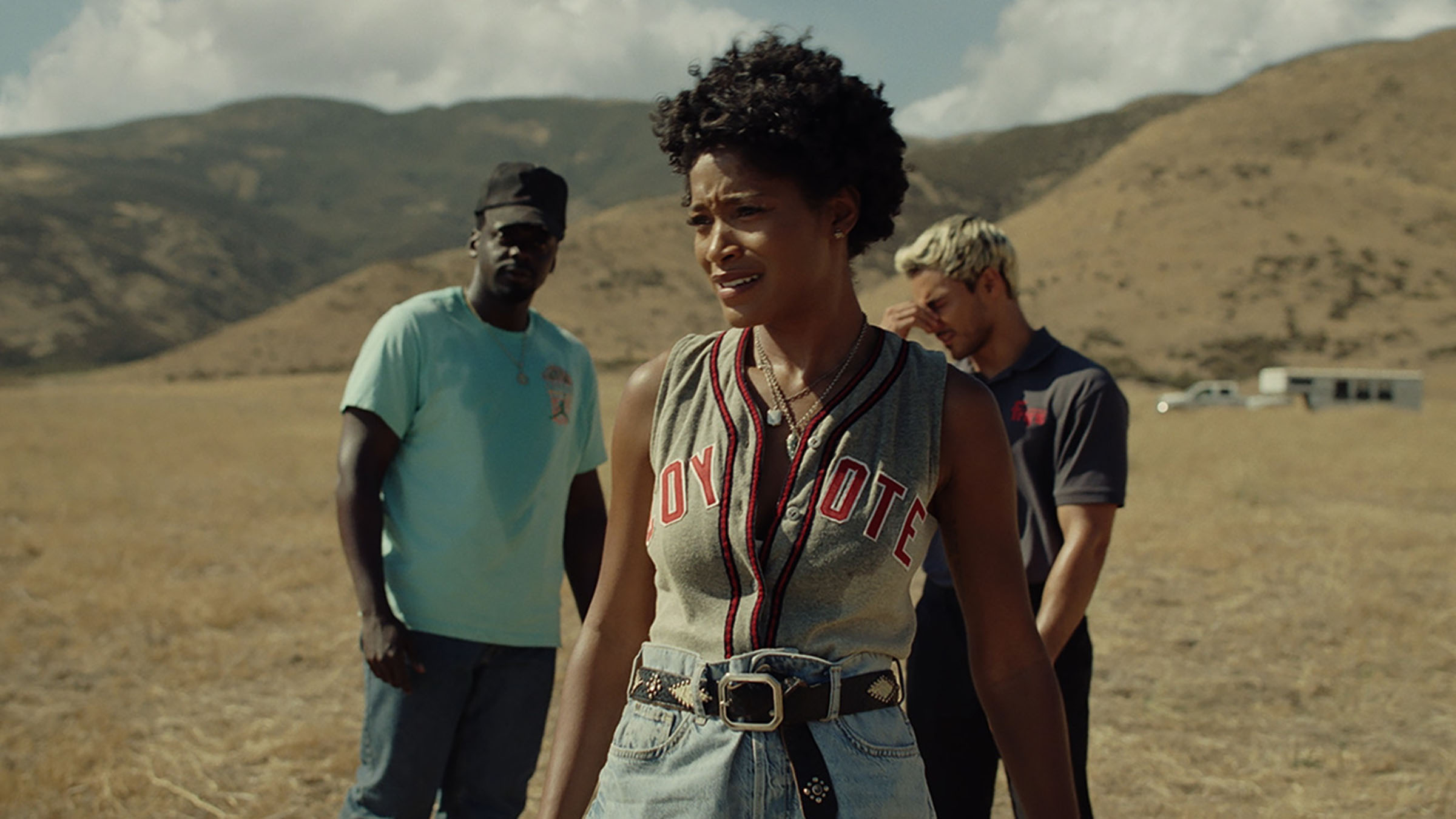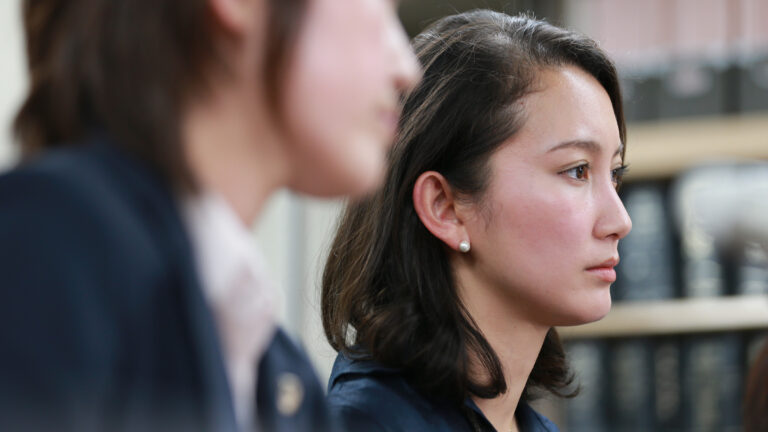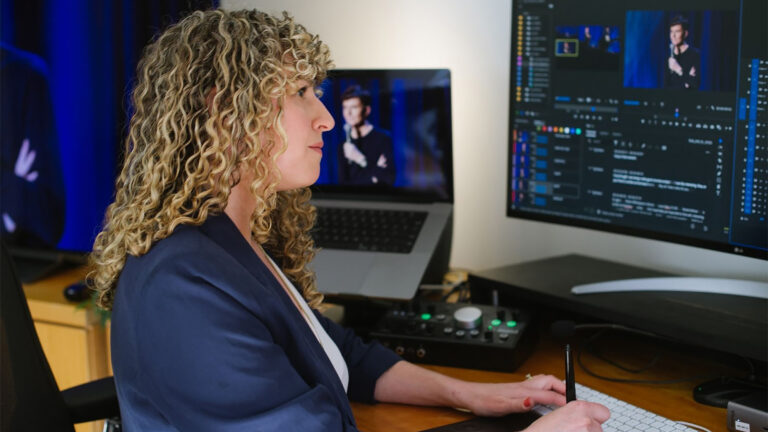First there was Get Out, the socio-political horror film that made us wonder how Jordan Peele wasn’t already a household name. Next came Us, which caused critics to dub him “the new Alfred Hitchcock.” Now there’s NOPE. And as star Keke Palmer rightly points out, the thing about Jordan Peele is that he makes being a genius look a little too easy.
But maybe part of Peele’s genius is in his careful choice of collaborators. Because as we learned in our interview with Peele’s longtime editor, Nicholas Monsour, it takes a team of brilliant, innovative, and dedicated creatives to bring the best version of his vision to life. What’s even better is that Peele readily acknowledges the debt he owes them, giving them due credit and daily respect. Read on to learn how this extraordinary team brought the most talked-about movie of the summer to the biggest screen while making the painstaking process fun and fulfilling for all involved.
Great ideas take time
The word spectacle gets tossed around a lot, beginning with Peele himself. On the face of it, NOPE is a popcorn extravaganza filled with surprises, suspense, and screams that belie the deeper metaphorical meanings.
But for those of us who work in the industry, perhaps what’s most spectacular is what happened behind the camera. Shot on IMAX and 65mm film in the searing heat of the Aqua Dulce desert, with a heaping helping of stunning (and stunningly invisible) visual effects, it’s the kind of moviemaking magic that most of us dream about being part of.
Nick has worked with Peele since the days of Key and Peele. He then cut Us, followed by a couple of episodes of Peele’s The Twilight Zone television series. A member of the creative inner circle, he can attest to the complexity of the production from the time Peele began tossing out ideas as far back as when they were still in post on Us.
“Jordan’s always riffing with his collaborators about future projects, and even while we were working on Us there were themes and ideas that I couldn’t quite know how they would develop,” Nick says. “He seems to go through an incubation process before he sits down to write, but the roots of the ideas have been in his head for a long time.”
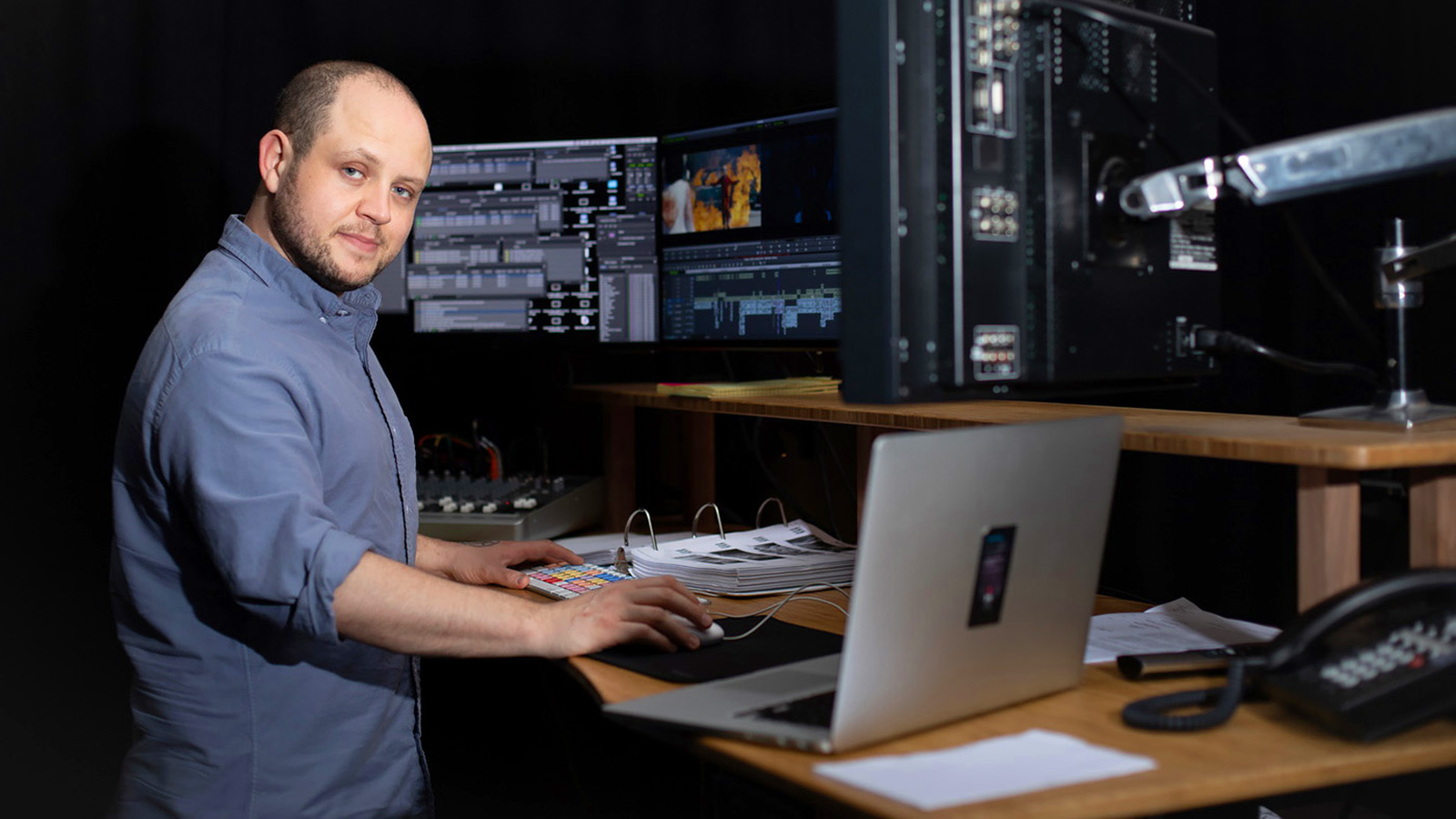
Which, when you watch NOPE, makes total sense. The sheer ambition of the production, combined with the quantity of carefully placed references and Easter eggs, point to a meticulous and lengthy period of research and forethought. No spoilers here, but there’s far more to absorb than is possible in a first viewing (especially with no pause or rewind functions), even if you’re a serious cinephile.
Nick, along with others who have been interviewed, talks about his experience with Peele’s process. According to Nick, he likes to sit down with his key collaborators and actually tell the story to them. “The act of describing the story helps him realize what he’s excited about,” Nick says. “He told me the core elements of the brother and sister and the horse ranch, and the relationship to Hollywood history and how this interaction with a UFO presence would tie into the themes of larger-than-life spectacles and people’s obsession with being able to capture things they can’t explain. Those ideas were all there, and then, through his writing process, he’d reach out and we’d talk.”
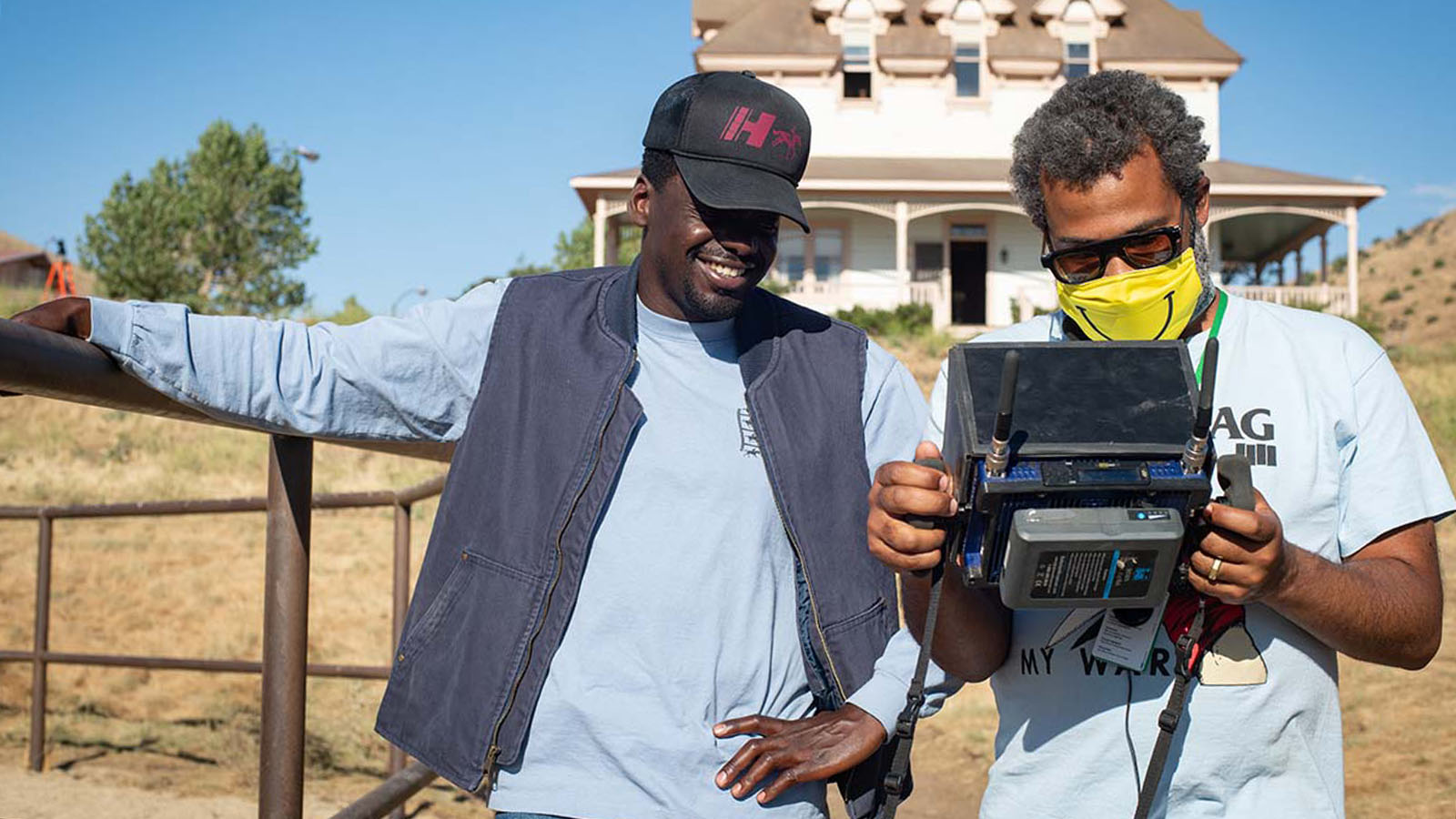
Nick isn’t “just” a picture editor. He’s also an artist, director, and designer whose sculptures, installations, performance and theater pieces, video art, and films have been exhibited in multiple cities in the United States and abroad. Beyond that, he’s got a background in music, which he credits with making him a better editor.
His eclectic tastes and multifaceted creative endeavors are what make him such a valued part of Peele’s team. “He’d send me weird videos of things online that he was thinking about and researching, and I’d send him things to listen to, which may or may not have been film music but were for inspiration,” Nick says.
Some of what they watched during the incubation period? “The original King Kong to talk about the history of the spectacle film. The Wizard of Oz to look at how film technology communicates other-worldliness. We had to talk about Jaws and Alien and Jurassic Park,” he says. “But one film we talked about early on was a film called Come and See, which is a harrowing and difficult war film about the darkest parts of humanity as expressed through torture and war, and how cinematic spectacle relates to how we process historical trauma.”
Peele spent the pandemic time writing the script, which he finished at the end of 2020. “When I read the first draft, that’s when I got the idea of the scope and scale, and knew that we had to figure out a lot to do it right, but it was really exciting,” Nick says. “I did all the things I normally do when I’m reading a script—thinking about the timing and the technical needs and how they’ll relate to post.”
One of the more noticeable differences between NOPE and more typical blockbuster films is the pace at which it unfolds. Because of the scope and scale, it’s important for the audience to be able to take it in, both visually and emotionally. Action and suspense aside, there are characters who function as more than just pawns to further the action or, for that matter, as symbols to support the subtext. They’re allowed to live and breathe, to experience epiphanies and to develop.
Likewise, Peele and Nick give us the time to process their journey as they move from a mix of wonder and excitement to fear, dread, and finally determination.
Jordan is always hunting for the most exciting, interesting experience for an audience.
“Jordan is always hunting for the most exciting, interesting experience for an audience,” Nick says. “It’s not just about fulfilling his own whims. I think one thing that both he and I find entertaining, even about our favorite popcorn movies, is that they really give you a sense of place and reality behind the characters that sometimes takes a little bit more time to soak in. When you do it right and your viewer is rewarded for noticing the details and gathering the kind of specific cultural information that you might get from a location or a character, it can pay off so much more than trying to have every beat of the movie move as quickly as possible.”
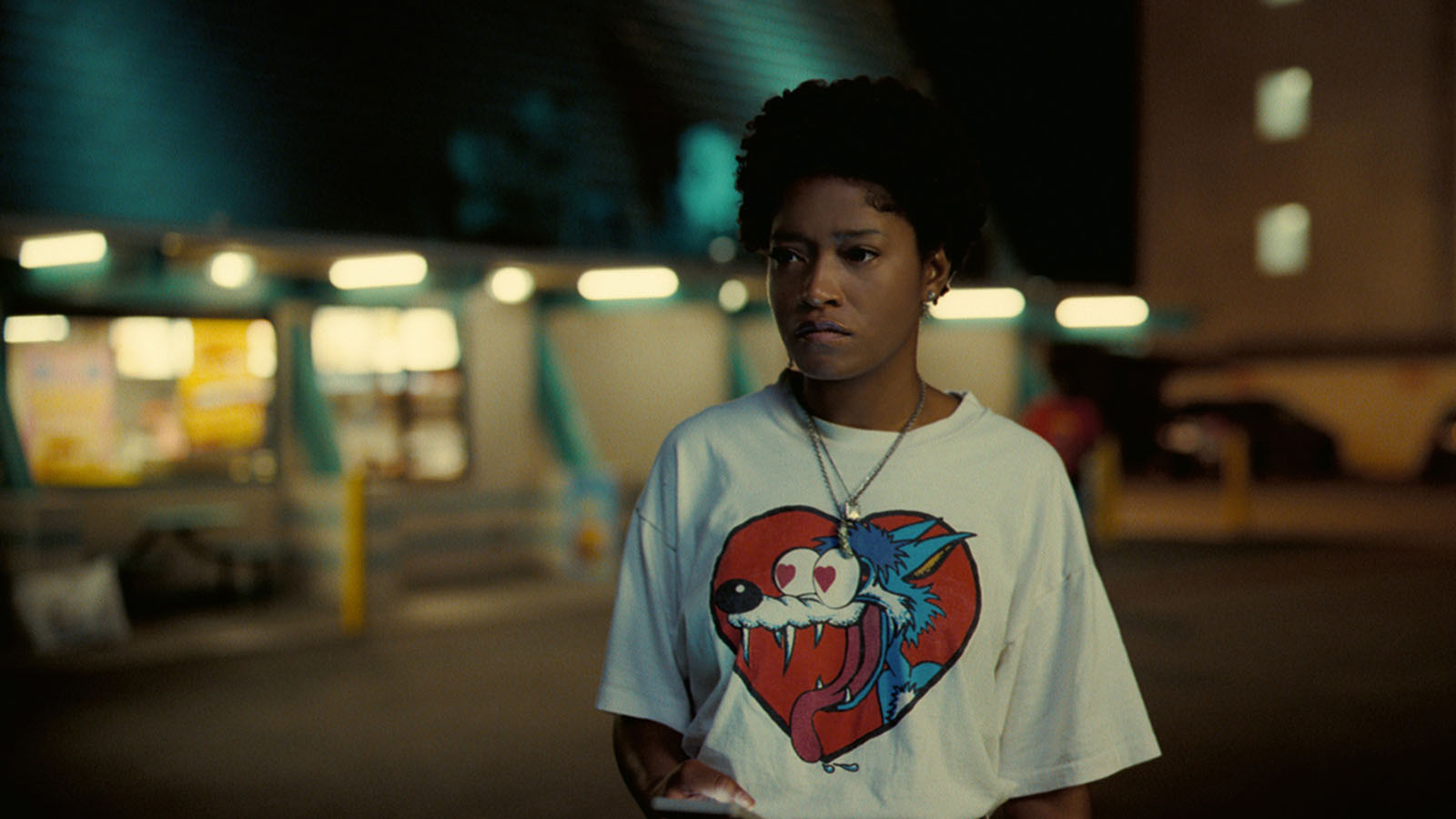
The other very clear element that emerged as Nick read the script was how important sound recording and mixing would be.
Work with extraordinary collaborators
Enter BAFTA-nominated sound designer Johnnie Burn, a frequent collaborator of Yorgos Lanthimos (The Lobster, The Favourite, The Killing of a Sacred Deer).
“We did an immense search and I spoke to many of the top sound designers. I was writing to say, ‘Hey, I have this super cool project that I can’t tell you anything about, but it’s going to be a huge sound challenge and a really rewarding project to work on,” Nick recounts. “After I talked to a few people, Jordan would then talk to the ones who seemed like good matches and out of that emerged the relationship between him and Johnnie. The sound design was one of the first things we got involved with.”
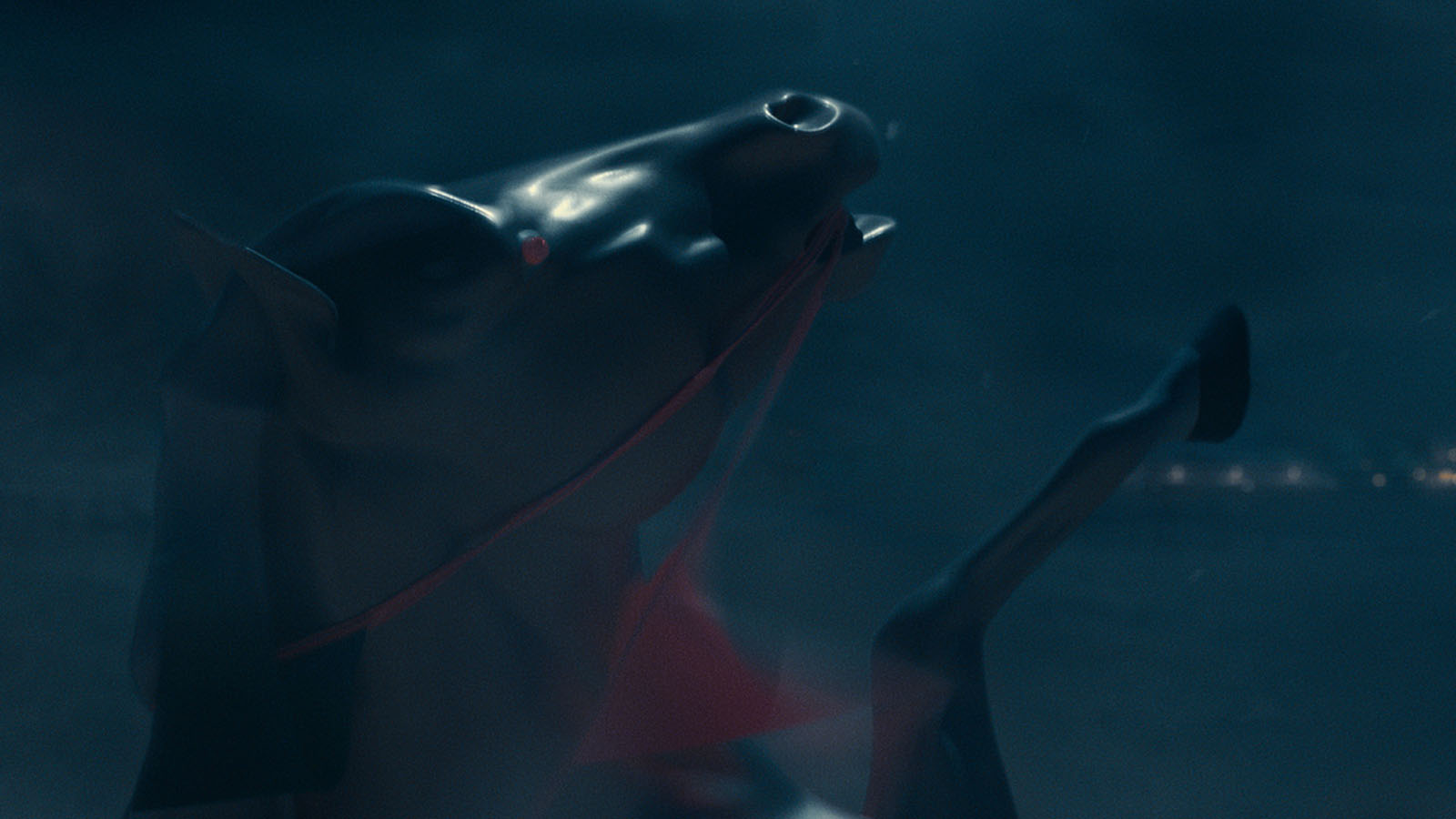
And it is amazing. At first, you’re not even sure what you’re hearing, but as the story unfolds you realize that the mix is as rich with clues and hints as the visuals. Burn takes sounds that seem familiar from horror and sci-fi classics and turns them into something utterly novel and terrifying—the more so as we begin to realize what the UFO is and what its intentions are.
Next to join was visual effects supervisor Guillaume Rocheron (1917, Life of Pi, Ad Astra, Godzilla: King of the Monsters), who began work on the UFO design. Nick describes the process of the previsualization for the VFX and the sound as being intertwined, with each influencing the other throughout.
According to several interviews, Peele knew early on that he wanted to shoot on large-format film, and reached out to perhaps the most expert of all IMAX storytellers, cinematographer Hoyte Van Hoytema, who has collaborated with Christopher Nolan previously on Dunkirk, Interstellar, and Tenet along with Nolan’s upcoming Oppenheimer, which arrives in theaters soon.
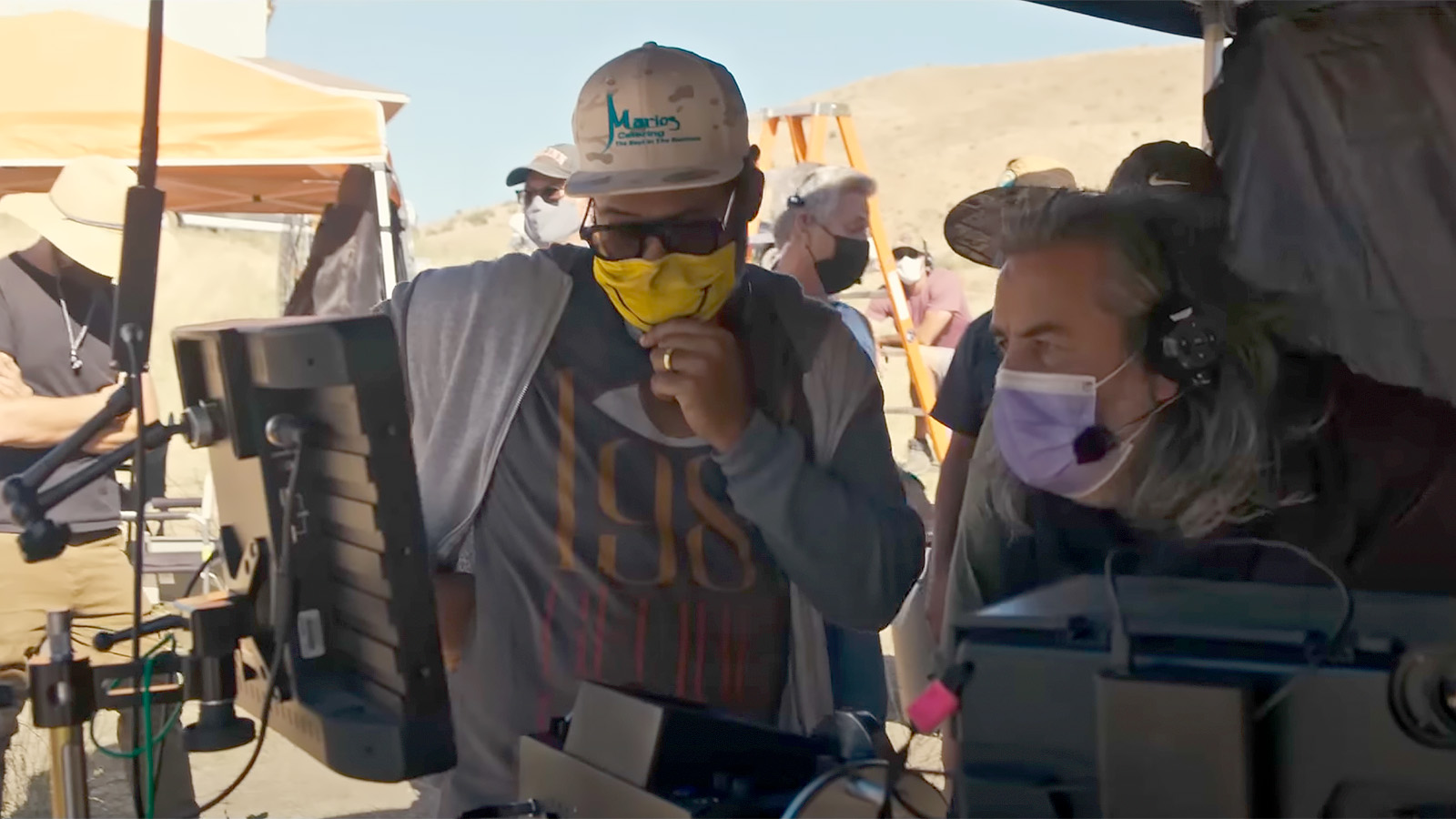
After a long period of working from home during the pandemic, Nick says that this was the first project where the creatives were able to work together in person. “We were in different offices with air filters, but the goal was to have a collaborative space with the music and visual effects editors and me all under the same roof.” With filming taking place in and around Los Angeles, the team’s headquarters were in a post-production building in the Universal complex, equipped with a 4K screening room with surround sound and office space. “It was crucial because when Jordan was there and had time we could all get together and he could have group discussions with every aspect of post all in one go,” Nick says.
Choose the right tools
There are plenty of filmmakers who are gearheads, in love with the latest technology for technology’s sake. But Jordan Peele isn’t one of them. The tools and techniques he, Van Hoyteman, and Rocheron employed had purely to do with creating a visual aesthetic that pushed the limits of the tech while paying tribute to the expansive movie spectacles of the past—from John Ford-style westerns to the Spielberg sci-fi extravaganzas that, in their time, treated audiences to thrilling new cinematic experiences.
Nick preferred not to speak directly about the cinematography because he (very ethically) feels that realm isn’t his to share. And even in articles that discuss the cameras and techniques there’s still a bit of “secret sauce” the filmmakers don’t wish to reveal.
What we do know is that NOPE is the first horror movie shot in IMAX and that in addition to the IMAX and Panavision 65mm film cameras (which also appear as props in one sequence that takes place inside a television studio), digital infrared photography was used to augment the day-for-night technique devised by Van Hoyteman to create the truly magnificent shots of the night skies. If the daytime scenes are meant to emphasize the dry and dusty vastness of the Aqua Dulce desert, the nighttime scenes reveal something never-before-seen, a combination that’s magical and menacing all at once.
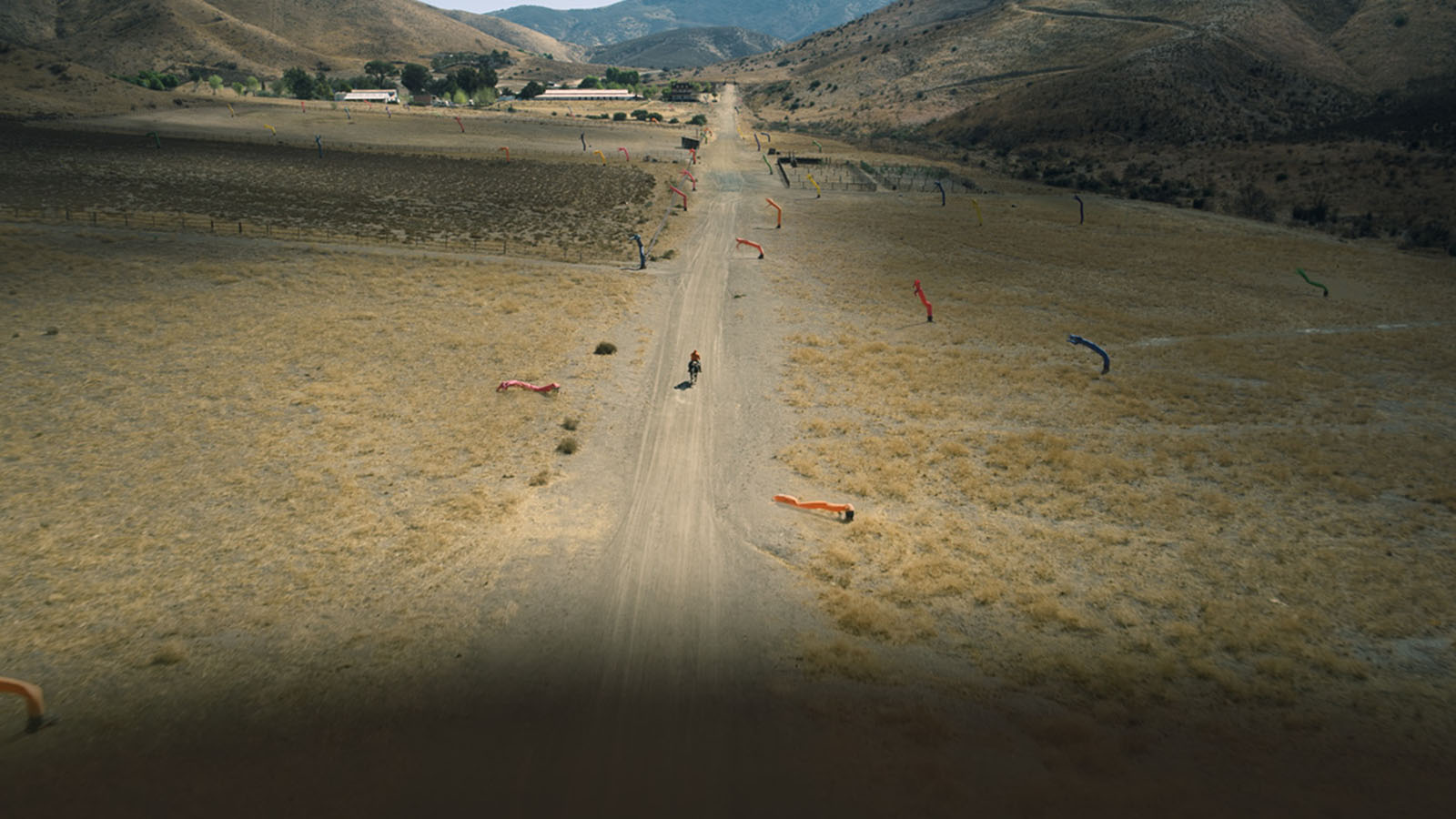
[Please pardon the rare but necessary intrusion from your writer: I had the misfortune of only being able to screen it at my rural Hell-plex. You should see it on the best possible screen you can find. Do as I say, not as I did.]
Meanwhile, Rocheron employed a team of VFX techs to capture the extensive on-set data necessary to create the 3D environments and to place the characters or elements within them. MPC was the primary visual effects house, handling both the UFO tasks and the grisly Gordy story, with a chillingly realistic CG chimpanzee based on a performance by actor Terry Notary. Fun fact: the sets for that part of the story were scaled up by 30 percent so the CG Gordy would look properly proportional to the environment. Which is to say that much of the movie contains a hefty helping of seamless VFX, all of which required extensive iteration from previsualization to delivery.
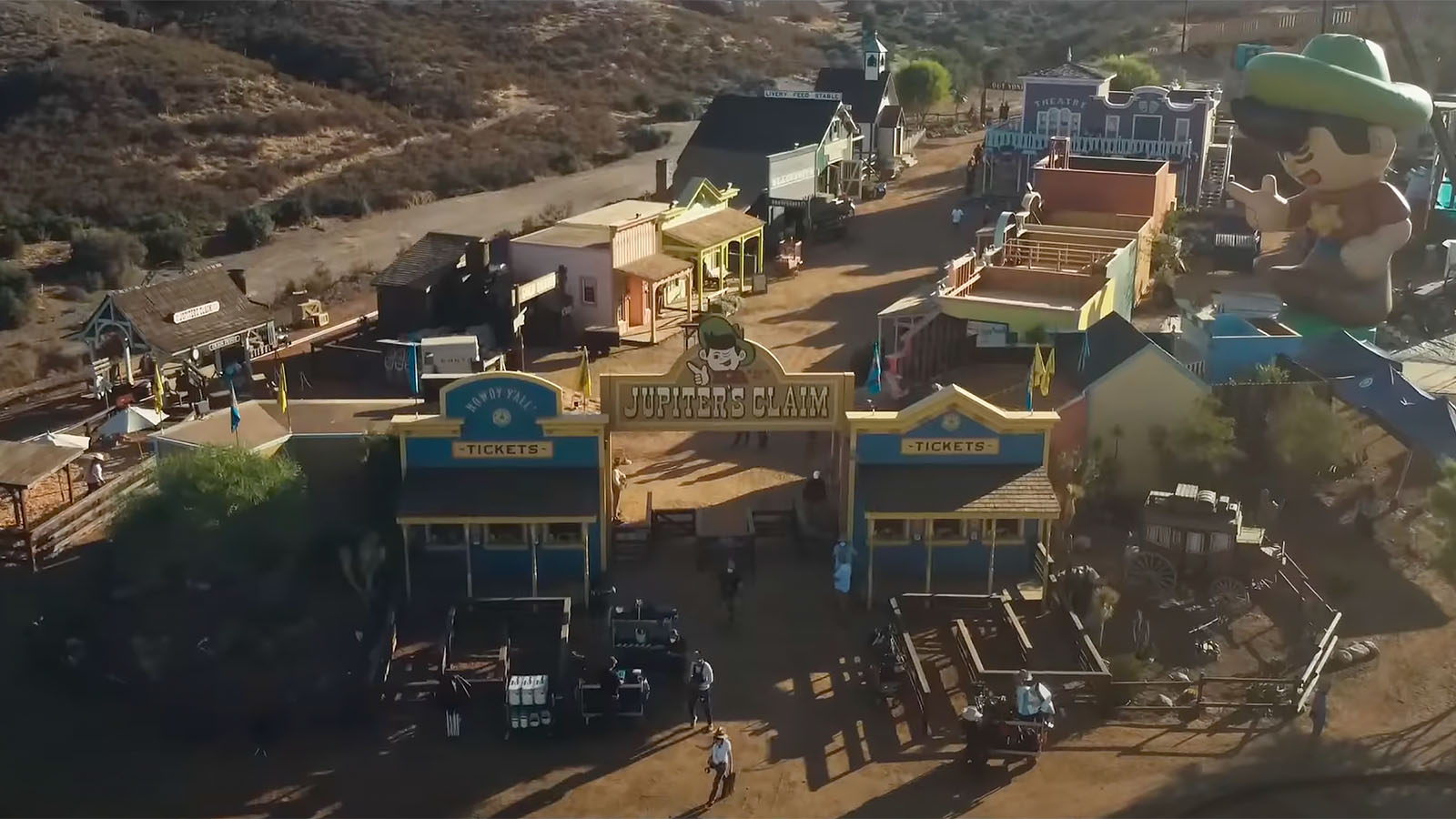
Peele, not unlike Alfred Hitchcock, works with a storyboard artist even for the sequences that don’t involve extensive effects. But as complicated as the story and shoot were, he still left himself room to improvise.
“The storyboards helped them nail what they absolutely needed,” Nick says. “But what was amazing was that they set themselves up to be able to improvise and add new ideas as they went, capturing a more intuitive in-the-moment feeling that was more organic and cinematic in an almost 1970s kind of way.”
Sweat the details
There are a number of director-editor teams who like to be physically together on set. Nick, however, prefers to stay away. In our previous interview during Us, he stated that he liked to come to the footage with a fresh eye. Three years later, he hasn’t wavered.
“They went through great pains to find perfect locations that were geographically accurate, and I had maps of them,” he says. “We had to map out the action to understand certain beats and how they would work with the visual effects—while this is going from point A to point B, this character is going from point B to point C—and how they related spatially so they could work out the angles and we could know how to tell the story and time it out. It was always interesting to see, when the footage came in, if it was clear to me even though I hadn’t been there.”
It was always interesting to see, when the footage came in, if it was clear to me even though I hadn’t been there.
Additionally, Peele is interested in seeing scenes that are more than just a picture assembly. “Jordan likes to think about all aspects of the film at once,” Nick says. “The music, the sound design, the visual effects, so it’s useful for me to give him something with initial sound work, music, and temp VFX worked in—especially for some of the more complicated intercut sequences so he can imagine the flow while he’s still shooting and be able to work in pickups based off of seeing how things are really functioning. Even knowing it’s going to change later, we still go through making many versions before we ever get to a full assembly of each scene.”
Principal photography began in June 2021 and lasted approximately three months, and from the start of filming to picture lock took a little over a year.
Every film requires a team of highly organized people to track all the various assets and turnovers, but especially with a production of this magnitude—shot on film with hundreds of visual effects—organization was critical.
With a production of this magnitude—shot on film with hundreds of visual effects—organization was critical.
The film was processed at FotoKem, and it took approximately a day and a half for the editorial team to receive transcoded dailies for Avid. Nick worked again with his first assistant editor from Us, Matt Absher, whom he credits with holding the post-production together and being an incredible partner. Nick also had assistant editor Ray Neopolitan working with him, and VFX editor Jeff Seidman worked with an assistant, as well. Then there was the team of sound and dialogue and ADR and Foley editors. At one point, Nick says they even brought additional assistants on to handle “some of the sheer weight of scanning and turnover that was required. It’s an immense amount of tracking and bookkeeping.”
A painstaking process
According to Nick, one of the most painstaking parts of the post-production process was the sound design. The sonic depiction of a UFO, the rich ambiance of an isolated ranch, and the many inexplicable sounds that serve to confound the characters and the audience create one of the richer listening experiences in recent history.
But if the sound design wasn’t already artistically monumental, there were the realities of the production that necessitated a truly painstaking process for Johnnie and Nick to give Peele a cut-in-progress that was aurally accurate enough for him to get a reasonable feel for how the many moving parts and pieces were coming together.
For one thing, Nick explains, “The massive IMAX and 70mm cameras make a lot of noise. Also, they were out in real locations with wind and generators and smoke machines and skydancers, and all sorts of stuff that made the recorded sound a great reference or starting point, but everything had to be built again.”

Johnnie’s process is both unique and “incredibly thorough,” Nick says. “He was at the locations recording all sorts of sounds, and gathering everything from different wind sounds to more biological or environmental references. Sometimes it was underwater, sometimes it was birds. He was really scouring the natural world for sounds and manipulating them to create different textures.”
“Because they were developing that process from before the shoot and throughout it, what I was trying to do during the edit was to recreate the sound from scratch in Avid so that I could give Jordan an idea of ‘Here’s what being in this room with these actors talking might have sounded like if we could have gotten it totally clean, without any of the location noise interfering.’”
“It was a ton of work. I was working with lots of audio tracks, trying to find the mixture of wind and leaves and dust and creaky old house sounds,” Nick says. “We were building up libraries, but every time we changed the edit we had to re-edit the sound. We were trying to come up with a starting point for what we thought the real space would sound like so Johnnie could tweak that and work on weirder ideas.”
They were also doing ADR (automatic dialogue replacement) sessions during the shoot to capture clean lines or to get temp dialogue to work with. “The whole third act of the movie is really four or five locations that are intercut, and they were all shot at different times throughout the shoot. We were building versions of act three for a few months before we had all the angles, and the only way to get what we needed was for me and the post PA to record temp dialogue.”
“And then we were realizing that some of the dialogue that was written didn’t quite work for the way they shot it, and we were making up new lines so Jordan could look at it and then think about it and come back with new lines. The edit continued to evolve through this kind of bouncing back and forth.”

Then, as the VFX shots came in, the sound design became even more complex.
“It was a ton of work, but everybody was really excited by it because we’re always looking for the right balance and the right way to allow Jordan to be as creatively in touch with what the film needed and to offer a solution for it,” Nick says.
The other huge challenge with the third act is that it’s all exteriors. “There was a lot of negotiating the elements and the way the visual effects would integrate with the real weather. So they had to improvise a bit, and then we had to get creative with how we used specific moments,” Nick explains. “They were shooting in an almost documentary style sometimes, where they would point the camera and pick up something that would work for a different beat.”
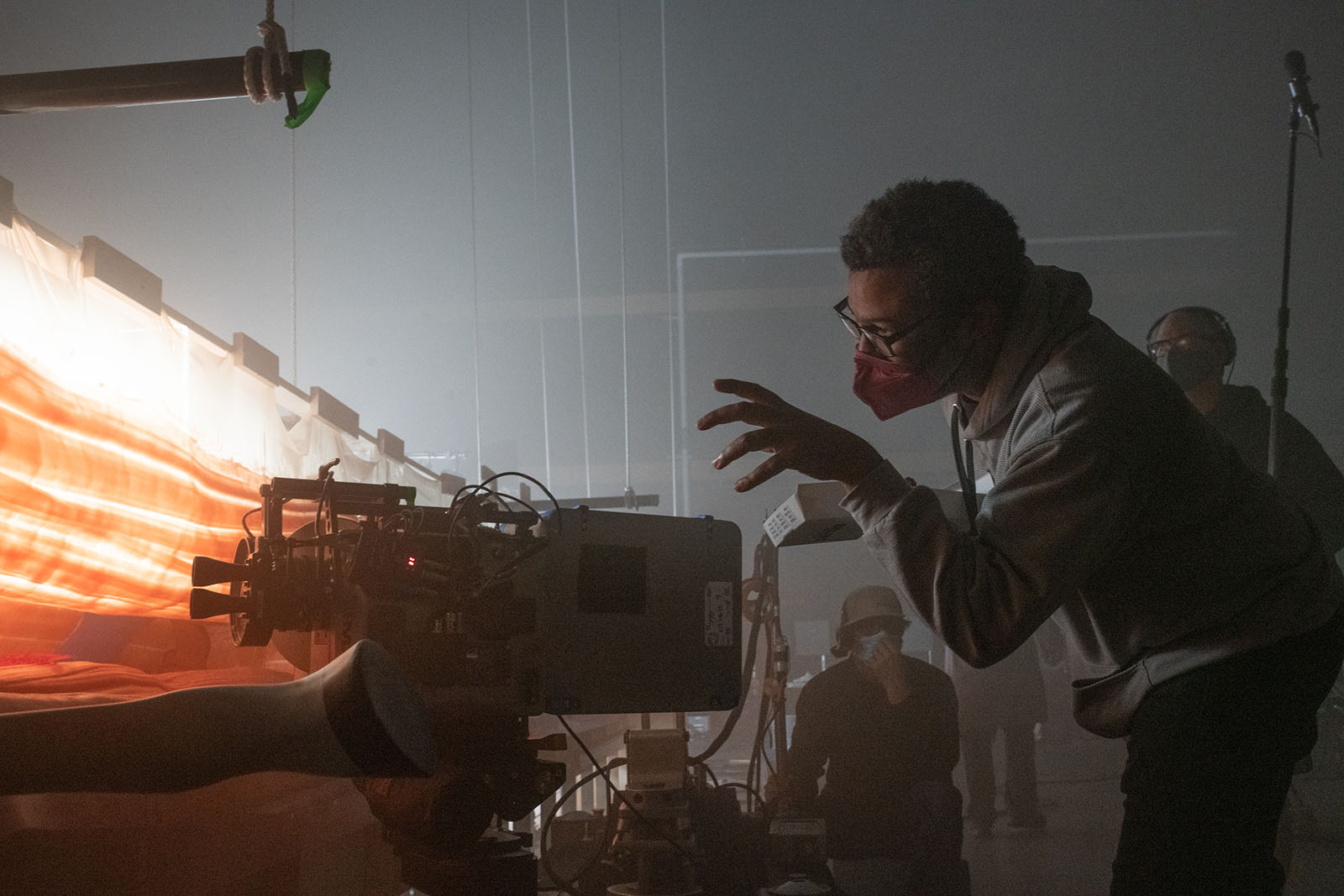
In the final film, you’d never believe that every frame wasn’t completely intentional and planned, so seamlessly is it constructed.
It’s not only a testament to the dedication of the crew. It also speaks volumes that the director was able to engender this degree of commitment and loyalty—to him and to his vision.
Do unto others
Jordan Peele might make it look easy to be a genius, but he apparently also makes it look easy to create a kind of “super team,” as Nick describes it, that takes every aspect of the movie to the highest level of artistry. “Everybody brings in their own different interests and background, and he’s deciding along the way, but it isn’t hierarchical for most of it—it’s just a horizontal exchange of ideas.”
Whether it’s cast members showing up at the set on their days off just to be there for the experience, or the inclusion of family and friends in the process of shaping the film, it’s clear that Peele treats everyone who participates in his films with absolute respect.
“There is a level of calmness and civility that you don’t normally encounter with such ambitious filmmaking,” Nick says. “There’s a lot of pressure involved and a lot of stress coming from every angle, and somehow he manages it in a way that remains creative and fun.”
It’s also why they work as hard as they do, knowing that Peele’s success is a reflection of their efforts. “When he’s on the hunt for something, I’ll go and do my own deep dive and have ten versions to show him the next time he walks into the room. Occasionally they make it all the way through the process, but also what I like is just being part of how we get to the final thing. Sometimes he has to see ten things that don’t quite work to land on the one that does.”
There’s also the respect Peele has for the viewer. “You want to make sure you’re making a clear deal with the audience,” Nick says. “You’re setting up the right expectations and want them to feel that you’ve delivered what you’ve set out to, and what they thought they were getting into, and drawing attention to the kinds of questions or emotions that are most important to unlocking the richer layers of the movie.”
When you have the opportunity to talk to Jordan Peele’s editor, you can’t let him get away without asking what he’s learned from working with him, and how it’s informed his process.
“With every project he continues to find new ways to challenge himself, and therefore us, so he continues to surprise me, Nick says. “Even though I’ve watched him do it, it’s still a bit of a magic trick, the way he’s able to arrive at films that are 100 percent Jordan Peele films while engaging and respecting the creative input of the people he works with. It’s just something I’ll always be learning from, and hope I can bring that to any interactions I have with people I’m working with on projects. It’s a wonderful talent and I’m glad when it really pays off for him.”
And, by extension, it pays off for us. Because there’s really nothing more inspiring than seeing great filmmakers doing great work while being great people.
We can’t wait to see what’s next.

